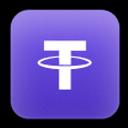StarCraft 2 Betting Guide: How to Bet on Korean Tournaments

Why does StarCraft 2 betting feel so different in Korea? Maybe because the competition is sharper, the players are legends, and every map can flip in a second.
The GSL and other Korean leagues set the standard for how the game is played at the highest level. For bettors, that means more excitement but also more complexity.
And how do you read the StarCraft 2 odds? Or where do you start if you’re new?
We will break the game down step by step. With our clear rules and explanations, you can follow Korean StarCraft 2 and place bets.
Basics of StarCraft 2 Esports
StarCraft II is a real-time strategy game built around speed, precision, and planning.
Two players face off as they collect resources, build armies, and try to outsmart each other in battles. In Korea, the competitive scene shaped the global standard for how the game is played.
Matches usually follow a series format. Best-of-three (Bo3) sets are common in group stages, while playoffs often extend to best-of-five (Bo5) or even best-of-seven (Bo7).
Another defining element is the race system. Players choose between the Terran, Protoss, or Zerg. Each one comes with its own strengths and weaknesses.
Matchups between races influence the pace of a game and the strategies that come into play. A Protoss vs. Zerg series feels completely different from Terran vs. Terran.
Popular Korean StarCraft II Leagues & Tournaments
Korea remains the heart of StarCraft II competition. The Global StarCraft II League, or GSL, is the most famous tournament.
It has crowned champions since the game’s earliest years. Alongside the GSL, Korean players compete in international circuits such as the ESL Pro Tour and DreamHack stops hosted in Seoul.
On top of that, smaller show matches and special events showcase rising players or bring back veterans for clashes. For comparison, here’s a look at the major Korean StarCraft II competitions:
|
Tournament |
Format / Best-of |
Frequency / Season |
Notable Features |
|
GSL (Global StarCraft II League) |
Bo3 groups → Bo5/Bo7 playoffs |
2-3 seasons per year |
Most prestigious Korean league; long history of champions |
|
ESL Pro Tour (Korea stop) |
Varies: Bo3 groups, Bo5 playoffs |
Annual |
Part of the global circuit; features international and Korean players |
|
DreamHack Masters Seoul |
Bo3 groups → Bo5 finals |
Annual |
Festival-style event; combines Korean pros with international stars |
|
Show Matches / Special Events |
Bo1 to Bo5 |
Occasional |
Fun exhibitions; highlight rivalries, or celebrate legends |
Understanding Betting Markets in StarCraft 2
In StarCraft II, you can bet on a match winner, a single map, or even the whole tournament.
Match Winner / Head-to-Head
The simplest market asks which player will win the series. Odds reflect skill, form, and past results.
For beginners, this is often the best starting point because it removes extra variables.
Map Winner / Individual Map Bets
Instead of focusing on the whole series, you can bet on who takes a single map. The option is useful when one player has a strong map pool but may not win the whole match.
It also allows more wagers across a single series.
Correct Score / Series Score
Here, you predict the exact outcome of a match, such as 2-1 or 3-0. The risk is higher since the score must be identical, but the payout is larger.
Handicap / Map Spread
Handicap markets balance matches between favorites and underdogs. For instance, a strong player might need to win by at least two maps for the bet to pay.
Conversely, an underdog can still “cover” if they take a map even while losing the series.
Outright / Tournament Winner
Outright bets cover the entire tournament. Instead of a single match, you back a player to win the event.
Odds are higher before the first round begins. However, the risk increases because many matches must go in that player’s favor.
Key Factors to Consider Before Placing Bets
The outcome of a StarCraft II match is influenced by factors you can track if you pay attention.
-
Player form: Reputations fade quickly. A champion who once looked untouchable may now exit early.
-
Race matchups: Terran, Protoss, and Zerg dictate the pace of play.
-
Map pool and vetoes: The maps that are left after vetoes tilt the balance. A Zerg player may look favored until every Zerg-friendly map is removed.
-
Balance patches: A minor tweak to a unit can flip the meta.
-
Head-to-head records: Some rivals clash again and again, and patterns emerge.
Betting Strategy & Risk Management
A bet on StarCraft II works best with structure, not emotion. In Korea’s early GSL seasons, many bettors rushed to back stars like Flash or Innovation.
The odds on those top names dropped too low, which left little profit. Instead, the best StarCraft 2 esports crypto betting strategies focus on logic and value rather than popularity.
Bankroll control comes next. Decide on a fixed budget and divide it into small units. A safe rule is to stake no more than 2% on a single match.
With $500 set aside, each bet would be $10. Even a losing streak leaves enough balance for future chances.
In addition, value betting creates long-term gains. If odds on a Protoss stand at 1.60, the bookmaker implies a 62.5% chance.
However, if the analysis of maps and matchups points closer to 70%, that bet has value. And such an edge builds profit.
Live betting can also reward sharp reads. For example, if a heavy favorite loses the first map, the odds rise from 1.40 to 1.90.
Odds, Probability & Converting Odds to Implied Probability
Odds in StarCraft II are more than numbers. They are clues about how likely an outcome should be. Decimal odds are the easiest to follow.
For instance, a line of 2.00 means you double your money if the bet wins. In Korea, most matches use decimals, although some sites still display fractional odds, such as 3/2, or moneyline formats, like +150.
Implied probability is where odds gain meaning. If you divide one by the decimal odds, you can see the chance suggested by the bookmaker. To illustrate, odds of 1.80 show a 55.5% chance, while 2.00 indicates 50%.
But the catch is the margin called the overround. Bookmakers stack the numbers so that the total is above 100%, which guarantees their profit.
From there, the bettor’s job is to spot value. Imagine a Korean Terran priced at 2.00 against a Protoss favorite at 1.80. The line suggests the match is almost even.
Yet, if your research shows the Terran thrives on the current map pool, that 2.00 price may undervalue their true chance.
Live Betting in Korean SC2 Matches
Live betting in Korean StarCraft II feels faster than most esports. Odds shift after each fight, drop, or expansion. Plus, the momentum of one map can reverse in seconds.
However, the biggest challenge is latency. Streams run a few seconds behind, but bookmakers shift odds instantly. Due to this, the market goes forward before you react.
The smartest approach is to watch the flow closely and act with intention. For example, a Protoss who loses an early Nexus may look finished, yet a comeback is possible on specific maps.
At the same time, avoid live bets if you can’t read the game deeply. If you want to expand beyond StarCraft II, check our Overwatch Betting Guide for another esports betting perspective.
Common Mistakes & Pitfalls to Avoid
Even seasoned bettors fall into traps that drain their bankroll. Due to this, the things you should try to avoid are:
-
Overbetting or chasing losses: One bad night should not trigger reckless bets.
-
Ignoring map vetoes or formats: A best-of-five tells a different story than a best-of-three.
-
Trusting big names without question: Korean legends attract bets, but form still matters.
-
Skipping research: Odds rarely explain how maps, races, and stats align.
-
Falling for streak bias: A player who won three matches is not automatically “due” for another.
Tools, Resources, and Responsible Betting in StarCraft II
Accurate information provides better bets in Korean StarCraft II. For example, Liquipedia and SC2 databases list match results, player stats, and tournament formats.
Additionally, Korean platforms, such as AfreecaTV, show how pros adapt in real-time. Local coverage often highlights strategies or map trends that odds alone cannot reveal.
To maximize value, odds comparison tools help you secure stronger prices across bookmakers. Legal and safety factors are also important, which vary by country.
So, always confirm what applies in your specific location. And stick to licensed bookmakers for safety.
Moreover, set firm limits, take breaks, and treat StarCraft II wagers as entertainment. Licensed platforms, such as Jackpot.bet, guarantee fair markets and secure betting.
Conclusion
StarCraft 2 betting works best when guided by knowledge, not guesswork. Odds and probabilities then become tools you can read instead of numbers that confuse.
As pointed out, the smartest approach is to begin small. Place modest bets, track your results, and learn how value appears over time. Each wager becomes a lesson that sharpens your judgment for the next one.
Korean tournaments, such as the GSL, remain the highest test for players. They are also the most exciting grounds for bettors.
So, the goal is not only to follow the best in the world but also to make every bet count.
Frequently Asked Questions
What is the safest way to start with StarCraft 2 betting?
Start small: pick simple bets, such as the match winner, and set a clear budget.
Then, see how your predictions match the results. Keep notes on what works and what doesn’t.
How do odds reflect the chances in Korean StarCraft II tournaments?
Odds are just a translation of probability. If a player sits at 2.00, that’s a 50% implied chance. In Korean events like the GSL, odds often move after map vetoes or a shift in form.
Why are Korean tournaments so popular for esports betting StarCraft 2 fans?
Korean StarCraft II has the toughest competition in the world. The GSL and other leagues feature players who train harder and innovate faster than anyone else.
For bettors, that means unpredictable matches, frequent upsets, and more chances to find value.
What common mistakes should beginners avoid?
The biggest traps are overbetting after a loss, trusting famous names without checking recent results, and forgetting how formats or patches change the balance.
Many newcomers also fall for “hot streaks.”









